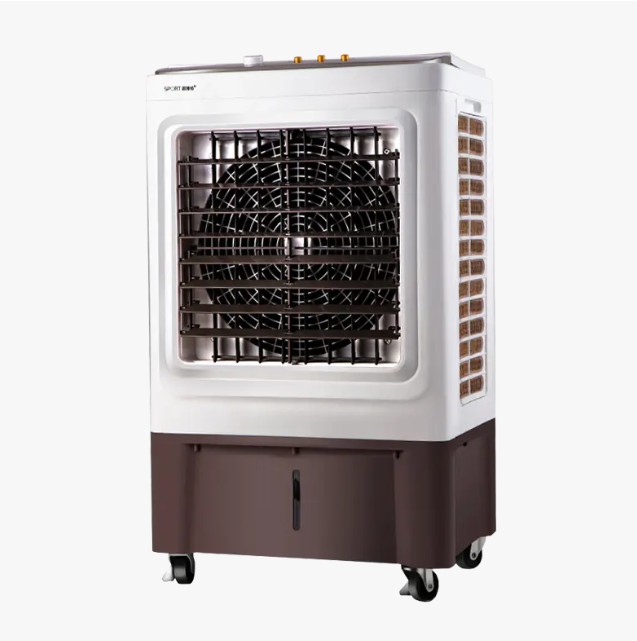Evaporative coolers (often referred to as eco-friendly air conditioners or water-cooled air conditioners) have garnered widespread attention for their energy-saving and high-efficiency temperature control solutions in industrial plants, commercial spaces, and even public venues. Many users know that they cool the air through water evaporation, but they may overlook their crucial role in ventilation and improving indoor air quality.
So, how do evaporative coolers effectively achieve this crucial ventilation and air exchange function?
Content
1. Forced air supply for continuous air exchange
Unlike traditional closed-cycle air conditioners, evaporative coolers are designed as open systems. Their operation is as follows:
- Intake of fresh outdoor air: The unit's powerful fan draws in natural air from outside.
- Evaporative cooling: As air passes through the wet curtain (evaporative medium), it absorbs heat and cools through water evaporation, transforming it into cool air.
- Forced indoor air supply: The cooled fresh air is forcefully and continuously delivered to the area requiring cooling.
The key to this process is its "forced" nature. Driven by a mechanical fan, an evaporative cooler continuously draws fresh, cool air into the room, forcing the stale, stagnant, and hot air outside through doors, windows, or designated exhaust vents. This ensures that the indoor air is constantly refreshed.
Second, it creates "positive pressure" indoors, optimizing the air environment.
When an evaporative cooler is operating, the large amount of fresh air continuously drawn into the room causes the indoor air pressure to be slightly higher than that outside, creating a "positive pressure" environment.
The advantages of this "positive pressure" environment include:
- Isolating odors and dust: It effectively prevents untreated outside air (such as dust, smoke, or odors) from infiltrating through gaps like door and window cracks.
- Concentrating pollutant discharge: Indoor heat, odors, dust, and fumes are efficiently directed to designated exhaust vents or open areas for discharge, preventing the accumulation of pollutants indoors.
For locations requiring large quantities of fresh air, such as busy workshops, kitchens, or farms, this continuous ventilation capability is unmatched by traditional air conditioners.
3. Improving Indoor Air Quality (IAQ)
An evaporative cooler is more than just a cooling device; it's an air treatment system. By continuously introducing fresh air and removing stale air, it directly addresses the following key aspects of indoor air quality (IAQ):
- Oxygen Supply: Ensures adequate oxygen levels in work or living spaces.
- Removes Stuffiness: Through high air changes, it effectively removes heat generated by people and equipment, eliminating the stuffiness caused by stagnant air.
- Dilution of Harmful Gases: Rapidly dilutes and removes harmful gases, volatile organic compounds (VOCs), and other pollutants generated indoors.
Thus, the value of an evaporative cooler lies in its seamless combination of cooling, ventilation, and air exchange. If you're looking for an energy-efficient cooling system for your industrial space that significantly improves indoor air quality, this eco-friendly air conditioner is undoubtedly an ideal choice that balances environmental benefits with employee comfort.
 English
English 中文简体
中文简体 عربى
عربى Tiếng Việt
Tiếng Việt



 CONTACT US
CONTACT US